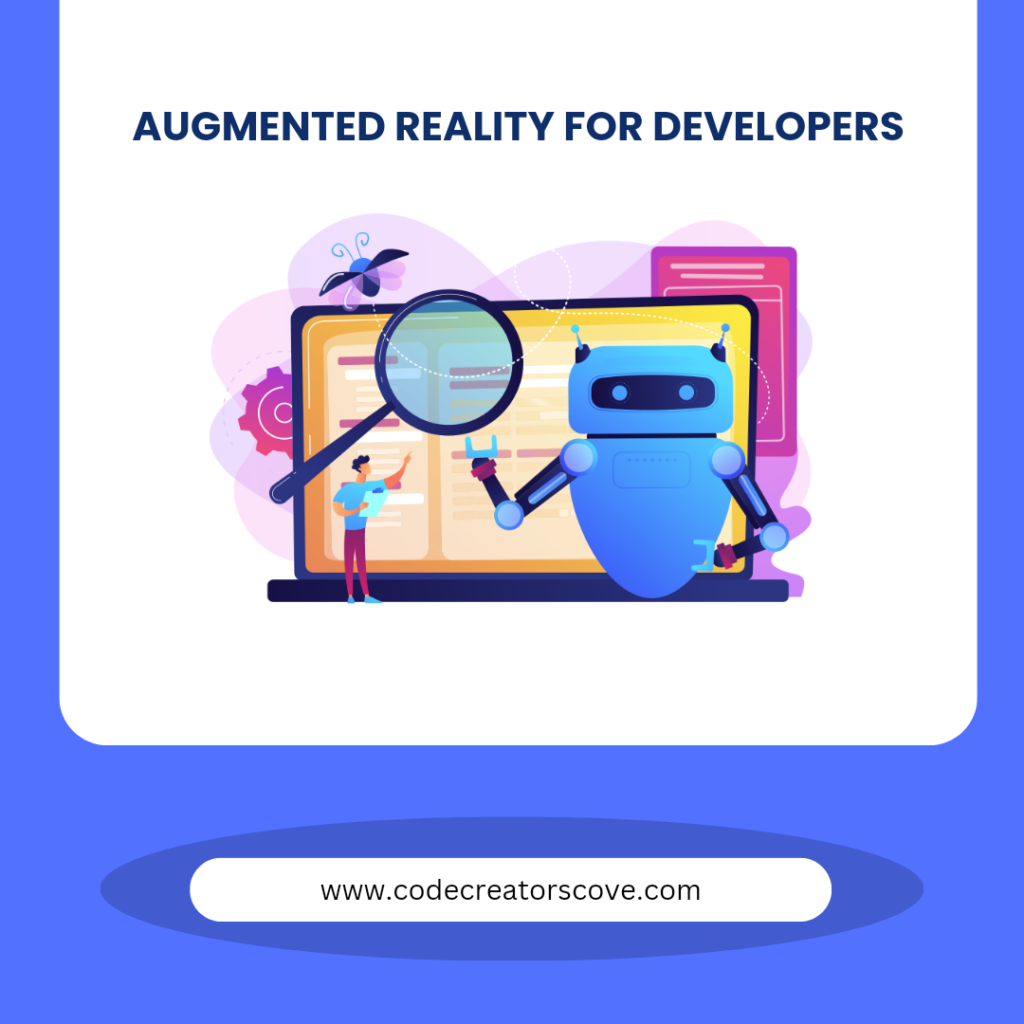Augmented Reality (AR) is transforming the way we interact with the digital world by superimposing virtual elements onto our physical environment. For developers, AR presents a vast landscape of opportunities to create immersive and interactive experiences. In this comprehensive guide, we’ll explore the fundamentals of AR, the tools and technologies available for AR development, and practical tips for getting started.
What is Augmented Reality (AR)?
Augmented Reality is a technology that enhances the real-world environment with computer-generated perceptual information, across multiple sensory modalities, including visual, auditory, haptic, somatosensory, and olfactory. Unlike Virtual Reality (VR), which creates an entirely artificial environment, AR integrates and adds value to the existing physical world.
Why is Augmented Reality (AR) Important for Developers?
Augmented Reality’s (AR) significance lies in its ability to blend the digital and physical worlds, creating new ways for users to interact with their surroundings. For developers, this means the chance to innovate in various fields such as gaming, education, healthcare, retail, and real estate. The demand for AR applications is growing, and those who master this technology will be at the forefront of the next digital transformation.
Getting Started with Augmented Reality (AR) Development
In order to make use of Augmented Reality (AR), here are the things to do:
1. Understanding AR Platforms and Tools
To develop AR applications, you need to familiarize yourself with the various AR platforms and tools available:
– ARKit (iOS): Developed by Apple, ARKit is a robust platform for creating AR experiences on iOS devices. It provides advanced features like motion tracking, environmental understanding, and light estimation.
– ARCore (Android): Google’s ARCore allows developers to build AR apps for Android devices. It offers capabilities such as motion tracking, environmental understanding, and light estimation.
– Microsoft HoloLens: A mixed reality device that blends holograms with the real world. It’s a powerful tool for developing enterprise-level AR applications.
– Unity and Unreal Engine: These game engines offer comprehensive support for AR development, providing tools and libraries that simplify the creation of AR experiences.
2. Learning the Basics
Before diving into AR development, it’s crucial to understand the core concepts:
– Tracking and Registration: AR relies on accurate tracking of the user’s position and orientation to overlay virtual objects correctly. Techniques include marker-based tracking, markerless tracking, and simultaneous localization and mapping (SLAM).
– Rendering: Rendering in AR involves displaying virtual objects in a way that they appear as part of the real world. This requires understanding 3D graphics, shaders, and lighting.
– Interaction: Effective AR applications allow users to interact with virtual objects naturally. This includes gestures, voice commands, and touch inputs.
3. Developing Your First AR Application
To create your first AR application, follow these steps:
– Choose Your Platform: Decide whether you want to develop for iOS, Android, or both. This choice will determine whether you use ARKit, ARCore, or a cross-platform solution.
– Set Up Your Development Environment: Install the necessary SDKs and tools. For ARKit, you’ll need Xcode and an Apple developer account. For ARCore, you’ll need Android Studio and the ARCore SDK.
– Create a Basic AR Experience: Start with a simple project, like placing a virtual object on a real-world surface. This will help you understand the basic principles and workflows of AR development.
– Iterate and Improve: Continuously test and refine your application. Pay attention to user feedback and improve the interaction and realism of your AR experiences.
Key Strategies for Successful Augmented Reality (AR) Development
These are the guide to follow for a successful Augmented Reality (AR) development:
– Prioritize User Experience: Design AR applications to be intuitive and user-friendly. Ensure that interactions are seamless and that the AR elements enhance, rather than overwhelm, the user’s experience.
– Optimize for Performance: AR applications can be resource-intensive. Optimize your code and assets to ensure that your application runs smoothly on all target devices. This includes managing memory usage, reducing unnecessary calculations, and compressing assets where possible.
– Comprehensive Testing: Test your AR application in various environments to ensure its robustness and reliability. Different lighting conditions, physical spaces, and user interactions can affect the performance and accuracy of AR applications.
– Stay Informed and Updated: AR technology is rapidly evolving. Keep up with the latest developments and updates from ARKit, ARCore, and other platforms. Leveraging new features and improvements will keep your applications on the cutting edge.
Future Trends in AR Development
The future of AR is bright, with continuous advancements in hardware and software:
– 5G Connectivity: The rollout of 5G will enhance AR experiences with faster data transmission and lower latency, enabling more complex and interactive applications.
– Wearable AR Devices: Expect to see more wearable AR devices like smart glasses, making AR experiences more seamless and integrated into daily life.
– AI Integration: Artificial Intelligence will play a significant role in enhancing AR, from improving object recognition to enabling more sophisticated interactions.
Conclusion
Augmented Reality offers developers a unique opportunity to create innovative and immersive experiences. By understanding the fundamentals, leveraging the right tools, and adhering to best practices, you can develop compelling AR applications that captivate users and push the boundaries of what’s possible. As the technology continues to evolve, staying informed and adaptable will be key to succeeding in this exciting field.
